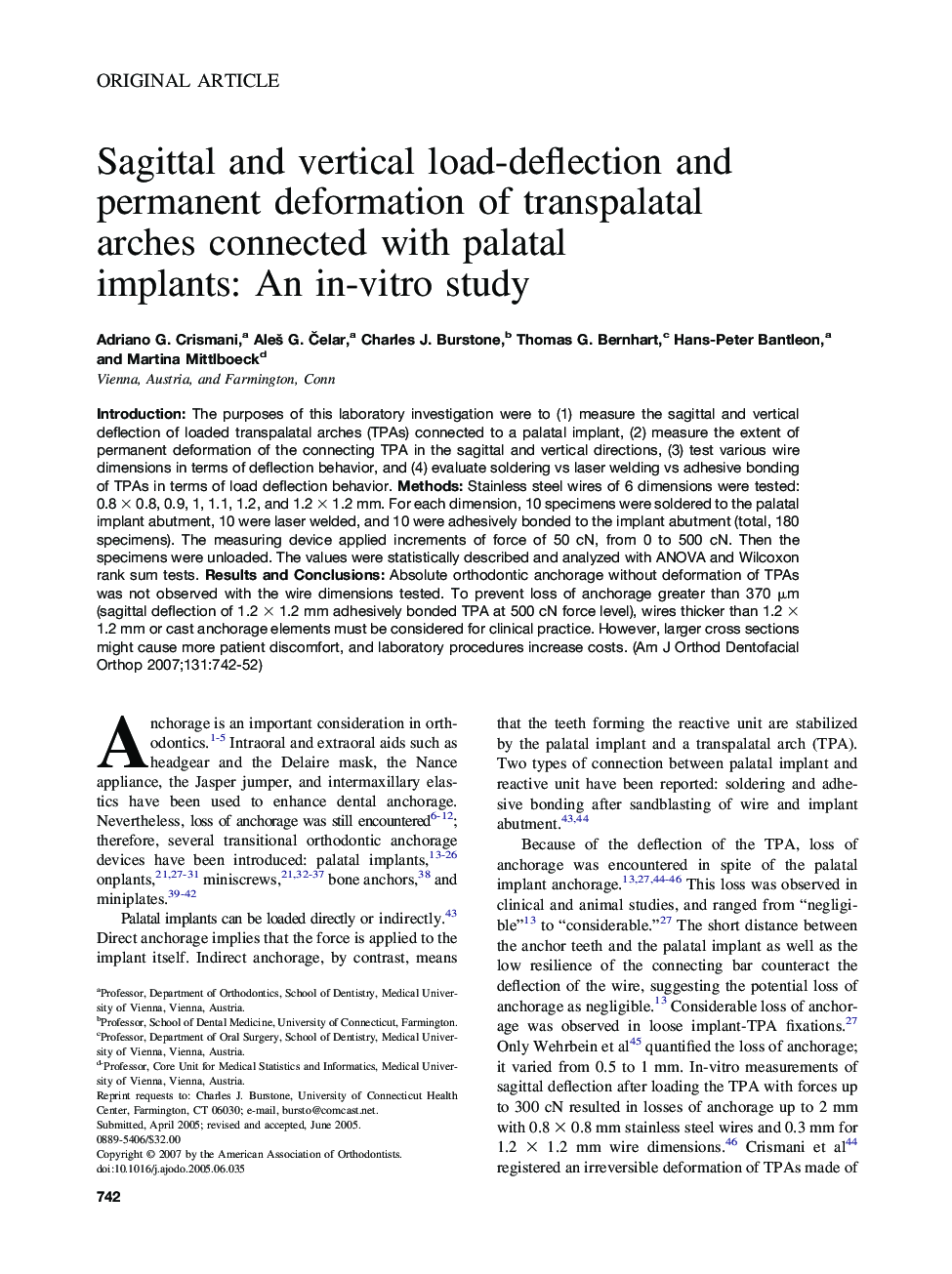| Article ID | Journal | Published Year | Pages | File Type |
|---|---|---|---|---|
| 3120411 | American Journal of Orthodontics and Dentofacial Orthopedics | 2007 | 11 Pages |
Introduction: The purposes of this laboratory investigation were to (1) measure the sagittal and vertical deflection of loaded transpalatal arches (TPAs) connected to a palatal implant, (2) measure the extent of permanent deformation of the connecting TPA in the sagittal and vertical directions, (3) test various wire dimensions in terms of deflection behavior, and (4) evaluate soldering vs laser welding vs adhesive bonding of TPAs in terms of load deflection behavior. Methods: Stainless steel wires of 6 dimensions were tested: 0.8 × 0.8, 0.9, 1, 1.1, 1.2, and 1.2 × 1.2 mm. For each dimension, 10 specimens were soldered to the palatal implant abutment, 10 were laser welded, and 10 were adhesively bonded to the implant abutment (total, 180 specimens). The measuring device applied increments of force of 50 cN, from 0 to 500 cN. Then the specimens were unloaded. The values were statistically described and analyzed with ANOVA and Wilcoxon rank sum tests. Results and Conclusions: Absolute orthodontic anchorage without deformation of TPAs was not observed with the wire dimensions tested. To prevent loss of anchorage greater than 370 μm (sagittal deflection of 1.2 × 1.2 mm adhesively bonded TPA at 500 cN force level), wires thicker than 1.2 × 1.2 mm or cast anchorage elements must be considered for clinical practice. However, larger cross sections might cause more patient discomfort, and laboratory procedures increase costs.
